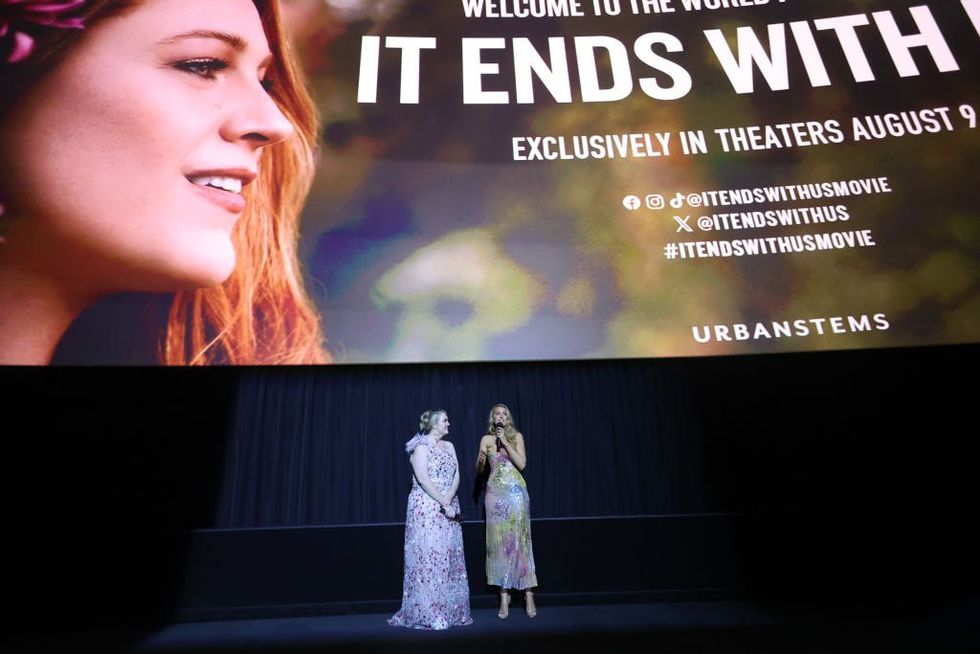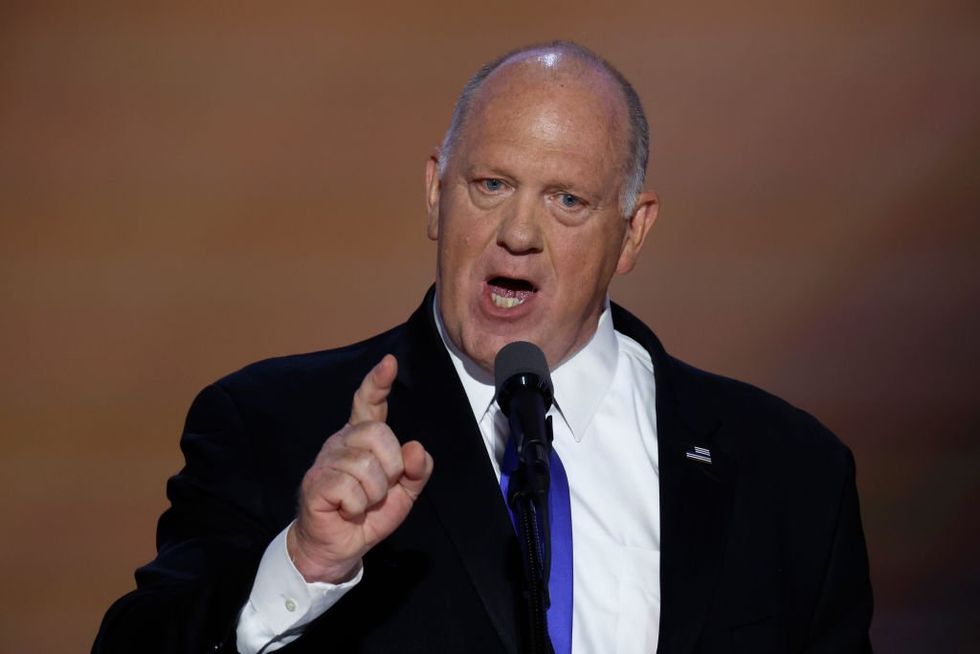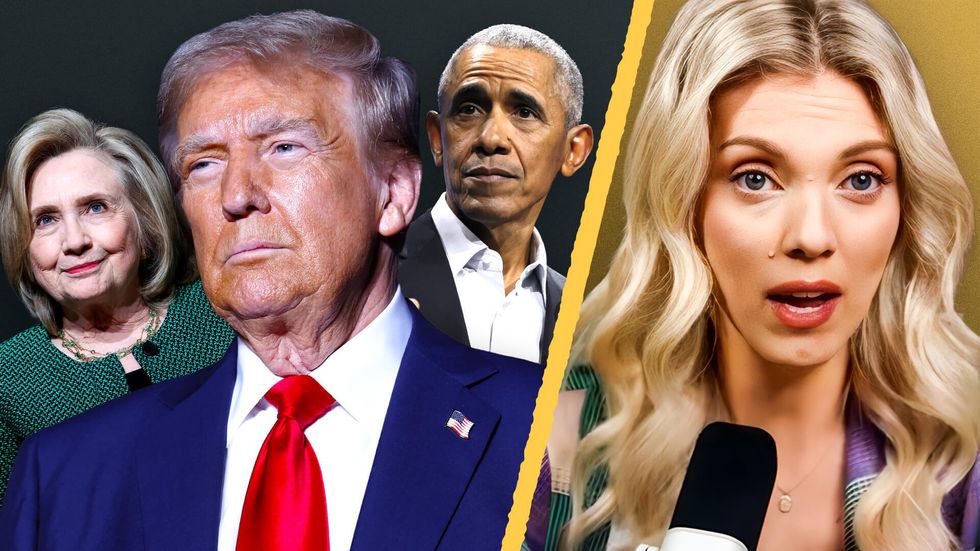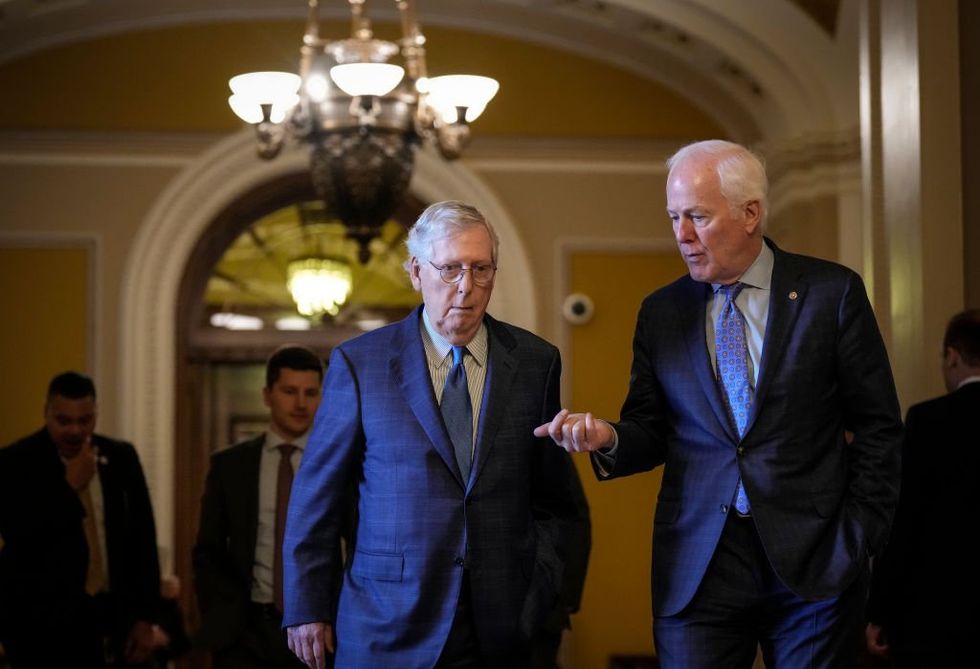'It Ends with Us' offers unflinching look at domestic violence
I read “It Ends with Us” based on the recommendation of my college roommate. At the time, Colleen Hoover's tale of domestic abuse and intergenerational trauma was at the peak of its popularity, and you couldn't walk into a Barnes and Noble without seeing it at the front of the store’s prominent Colleen Hoover section. I found the writing lackluster, to say the least. But I’m a harsh judge, as I grew up exclusively reading British and American classic literature. So naturally, I had to read the sequel. I’m just a girl, after all.Unflinchingly honest yet hopeful, 'It Ends with Us' has the potential to make a difference in the lives of viewers struggling to free themselves and their children from similar cycles of abuse.Director Justin Baldoni's adaptation was troubled from the get-go. Early glimpses of Blake Lively as the book's protagonist dismayed women — myself among them — who could not reconcile Lively's wardrobe with how they envisioned Lily Bloom.Delays caused by the writers' strike and rumors of tension among cast members added to the offscreen drama.The film's marketing was also confusing, as Baldoni (who also plays Lily's love interest/tormentor, neurosurgeon Ryle Kincaid) and Lively often seemed to be promoting two very different films. Baldoni, who kept noticeably separate from the rest of the cast during the press tour, spoke about the importance about raising awareness on the topic of domestic abuse. In stark contrast, Lively brushed off such serious questions, choosing instead to plug her hair-care line and to brag about wearing Britney Spears’ Versace dress on the red carpet. If Lively’s promotion was the only exposure you had to the story, you would be forgiven for thinking that it was a romantic comedy.Now that "It Ends with Us" is finally in theaters, however, those intending to see it should be warned. Whatever flaws the movie may have, it is excruciatingly faithful to the book's graphic depictions of domestic violence.Hoover is intimately familiar with such violence; she based the novel on her childhood memories of watching her father abuse her mother. This also inspired her to tell the story from a woman's perspective, a perspective Baldoni's adaptation retains. In stark contrast to the “Fifty Shades of Gray” culture of the last decade, “It Ends with Us” does not find any titillation in abuse. “The intention was to not glorify [domestic violence] in any way,” Baldoni said. Instead, it paints a complex picture of the harsh reality many women face. “Why did she stay?” becomes less black and white. The truth is never that simple.Like the book, the movie begins with a stereotypical, yet convincing, romance between Lily and Ryle. Bad boy meets good girl. Bad boy falls for good girl. Bad boy reforms for good girl, until you realize that he didn’t. For Baldoni, it was crucial that the audience see his character through Lily's eyes. "This movie hinges on this relationship working and there being real love, and real romance, and real passion there. 'Cause that is what happens in real life," Baldoni told Access Hollywood, adding that:I wanted the film to reflect Lily’s emotional journey, to be in her mind in a way that an audience can understand the complexity, and the challenge, and the situation that she was in to choose something better for herself than maybe what was chosen for her. And the only way to do that was to make Ryle a human and to protect Lily in that way.This emotional ambiguity makes the eventual violence Lily suffers all the more horrific. I’ll spare you the details — they’re so gory it’s hard to repeat. Suffice it to say that tears were shed over the brutalization depicted.Other elements of the film were far less effective. In particular, the pivotal moment in which Lively and Baldoni's characters first meet. Lively's husband, Ryan Reynolds, apparently rewrote this scene without consulting screenwriter Christy Hall. As much as I love Reynolds, it pains me to say that his contribution stands out — and not in a good way. The dialogue is disjointed and clunky, and the banter that was supposed to have been flirtatious is just ... strange. It's truly unfortunate. That aside, Baldoni approaches this sensitive subject with obvious care. The film's delicate cinematography and tasteful, PG-13 love scenes keep the focus on Lily's fight to break free from her abuser. Unflinchingly honest yet hopeful, “It Ends with Us" has the potential to make a difference in the lives of viewers struggling to free themselves and their children from similar cycles of abuse."It Ends with Us" has partnered with the No More foundation to raise awareness about domestic violence. If you or someone you know is dealing with domestic violence, the National Domestic Violence Hotline is 1-(800)-799-SAFE.


I read “It Ends with Us” based on the recommendation of my college roommate. At the time, Colleen Hoover's tale of domestic abuse and intergenerational trauma was at the peak of its popularity, and you couldn't walk into a Barnes and Noble without seeing it at the front of the store’s prominent Colleen Hoover section.
I found the writing lackluster, to say the least. But I’m a harsh judge, as I grew up exclusively reading British and American classic literature. So naturally, I had to read the sequel. I’m just a girl, after all.
Unflinchingly honest yet hopeful, 'It Ends with Us' has the potential to make a difference in the lives of viewers struggling to free themselves and their children from similar cycles of abuse.
Director Justin Baldoni's adaptation was troubled from the get-go. Early glimpses of Blake Lively as the book's protagonist dismayed women — myself among them — who could not reconcile Lively's wardrobe with how they envisioned Lily Bloom.
Delays caused by the writers' strike and rumors of tension among cast members added to the offscreen drama.
The film's marketing was also confusing, as Baldoni (who also plays Lily's love interest/tormentor, neurosurgeon Ryle Kincaid) and Lively often seemed to be promoting two very different films.
Baldoni, who kept noticeably separate from the rest of the cast during the press tour, spoke about the importance about raising awareness on the topic of domestic abuse.
In stark contrast, Lively brushed off such serious questions, choosing instead to plug her hair-care line and to brag about wearing Britney Spears’ Versace dress on the red carpet. If Lively’s promotion was the only exposure you had to the story, you would be forgiven for thinking that it was a romantic comedy.
Now that "It Ends with Us" is finally in theaters, however, those intending to see it should be warned. Whatever flaws the movie may have, it is excruciatingly faithful to the book's graphic depictions of domestic violence.
Hoover is intimately familiar with such violence; she based the novel on her childhood memories of watching her father abuse her mother. This also inspired her to tell the story from a woman's perspective, a perspective Baldoni's adaptation retains.
In stark contrast to the “Fifty Shades of Gray” culture of the last decade, “It Ends with Us” does not find any titillation in abuse. “The intention was to not glorify [domestic violence] in any way,” Baldoni said. Instead, it paints a complex picture of the harsh reality many women face. “Why did she stay?” becomes less black and white. The truth is never that simple.
Like the book, the movie begins with a stereotypical, yet convincing, romance between Lily and Ryle. Bad boy meets good girl. Bad boy falls for good girl. Bad boy reforms for good girl, until you realize that he didn’t.
For Baldoni, it was crucial that the audience see his character through Lily's eyes. "This movie hinges on this relationship working and there being real love, and real romance, and real passion there. 'Cause that is what happens in real life," Baldoni told Access Hollywood, adding that:
I wanted the film to reflect Lily’s emotional journey, to be in her mind in a way that an audience can understand the complexity, and the challenge, and the situation that she was in to choose something better for herself than maybe what was chosen for her. And the only way to do that was to make Ryle a human and to protect Lily in that way.
This emotional ambiguity makes the eventual violence Lily suffers all the more horrific. I’ll spare you the details — they’re so gory it’s hard to repeat. Suffice it to say that tears were shed over the brutalization depicted.
Other elements of the film were far less effective. In particular, the pivotal moment in which Lively and Baldoni's characters first meet. Lively's husband, Ryan Reynolds, apparently rewrote this scene without consulting screenwriter Christy Hall.
As much as I love Reynolds, it pains me to say that his contribution stands out — and not in a good way. The dialogue is disjointed and clunky, and the banter that was supposed to have been flirtatious is just ... strange. It's truly unfortunate.
That aside, Baldoni approaches this sensitive subject with obvious care. The film's delicate cinematography and tasteful, PG-13 love scenes keep the focus on Lily's fight to break free from her abuser.
Unflinchingly honest yet hopeful, “It Ends with Us" has the potential to make a difference in the lives of viewers struggling to free themselves and their children from similar cycles of abuse."It Ends with Us" has partnered with the No More foundation to raise awareness about domestic violence. If you or someone you know is dealing with domestic violence, the National Domestic Violence Hotline is 1-(800)-799-SAFE.
Originally Published at Daily Wire, World Net Daily, or The Blaze
What's Your Reaction?
































































































